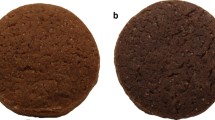Abstract
The texture of food plays a vital role in its overall quality, affecting both sensory experience and functional aspects, such as processing and preservation. To study texture in the field of food science and technology, various analytical methods are used to measure mechanical properties such as hardness, cohesiveness, and viscosity. One widely utilized technique for evaluating the texture of solid foods, particularly those with high firmness or brittleness such as dried vegetables, is compression testing. Here, a force is applied to a food sample until it deforms or fractures. In this particular study, dried onions, carrots, and peppers were chosen as test samples to investigate their texture and compression properties. To perform the tests, the researchers employed a Shimadzu AGS-X universal testing machine equipped with a 1 kN load cell capacity. This machine allowed them to compress the samples and measure the force required to achieve a specific deformation. The obtained results revealed that the texture and compression properties of the dried vegetables were significantly influenced by the specific part of the vegetable being tested. For instance, when examining the dried onions, a notable disparity was observed between the inner and outer parts. The basal plate of the onion, in particular, exhibited much greater hardness compared to the middle portion of the dried onion. Consequently, breaking the sample required a higher compression force. This discovery implies that the texture and compression properties of dried vegetables are closely tied to their inherent characteristics, internal structure, and composition.
Access this chapter
Tax calculation will be finalised at checkout
Purchases are for personal use only
Similar content being viewed by others
References
Kadam, S.U., Tiwari, B.K., O’Donnell, C.P.: 6- Improved thermal processing for food texture modification. Woodhead Publishing Ser. Food Sci., Technol. Nutr. 1, 115–131 (2015)
Day, L., Golding, M.: Food Structure, Rheology, and Texture, Encyclopedia of Food Chemistry, pp. 125–129 (2016)
Chen, L., Opara, U.M.: Texture measurement approaches in fresh and processed foods—a review. Food Res. Int. 51, 823–835 (2013)
Vernon, K.E.J., Sherman, P.: Evaluation of the firmness of Leicester cheese by compression tests with the Instron universal testing machine. J. Texture Stud. 9, 311–324 (1978)
Shama, F., Sherman, P.: Evaluation of some textural properties of foods with the Instron universal testing machine. J. Texture Stud. 4, 344–353 (1973)
Kohyama, K.: Food texture—sensory evaluation and instrumental measurement, textural characteristics of world foods (2020)
Fellows, P.J.: Properties of food and principles of processing. In: Food Processing Technology, pp. 3–200 (2017)
Saeleaw, M., Schleining, G.: A review: crispness in dry foods and quality measurements based on acoustic–mechanical destructive techniques. J. Food Eng. 105, 387–399 (2011)
Damez, J.-L.: Meat quality assessment using biophysical methods related to meat structure. Meat Sci. 80, 132–149 (2008)
Shimadzu.com: https://www.ssi.shimadzu.com/products/materials-testing/uni-ttm-system/ez-test-texture-analyzer/index.html. Accessed 15 May 2023
Aprilia, G.E., Triawan, F., Saville, R.: Crispness measurement of potato crisps by single specimen using compression test. In: The 5th Annual Applied Science and Engineering Conference (AASEC 2020) (2021)
Triawan, F., Aprilia, G.E., Saptaji, K., Saville, R., Nandiyanto, A.B.D.: Determining crispness level of dry food through its compressive strain energy. Ind. J. Comput., Eng., Design 3, 106–118 (2021)
Holt, C.B.: Measurement of tomato firmness with a universal testing machine. J. Texture Stud. 1, 491–501 (1970)
Babarinsa, F.A., Ige, M.T.: Energy absorption capacity of packaged Roma tomatoes under compressive loading, Int. J. Sci. Eng. Res. 3 (2012)
Babarinsa, F.A., Ige, M.T.: Strength parameters of packaged Roma tomatoes at break point under compressive loading. Int. J. Sci. Eng. Res. 3 (2012)
Author information
Authors and Affiliations
Corresponding author
Editor information
Editors and Affiliations
Rights and permissions
Copyright information
© 2024 The Author(s), under exclusive license to Springer Nature Switzerland AG
About this paper
Cite this paper
Milošević, M., Jevtić, I., Trajković, I., Zlatanović, I., Mladenović, G., Korolija, N. (2024). Determination of Compression Response for Various Dried Vegetables. In: Mitrovic, N., Mladenovic, G., Mitrovic, A. (eds) New Trends in Engineering Research. CNNTech 2023. Lecture Notes in Networks and Systems, vol 792. Springer, Cham. https://doi.org/10.1007/978-3-031-46432-4_8
Download citation
DOI: https://doi.org/10.1007/978-3-031-46432-4_8
Published:
Publisher Name: Springer, Cham
Print ISBN: 978-3-031-46431-7
Online ISBN: 978-3-031-46432-4
eBook Packages: Intelligent Technologies and RoboticsIntelligent Technologies and Robotics (R0)




